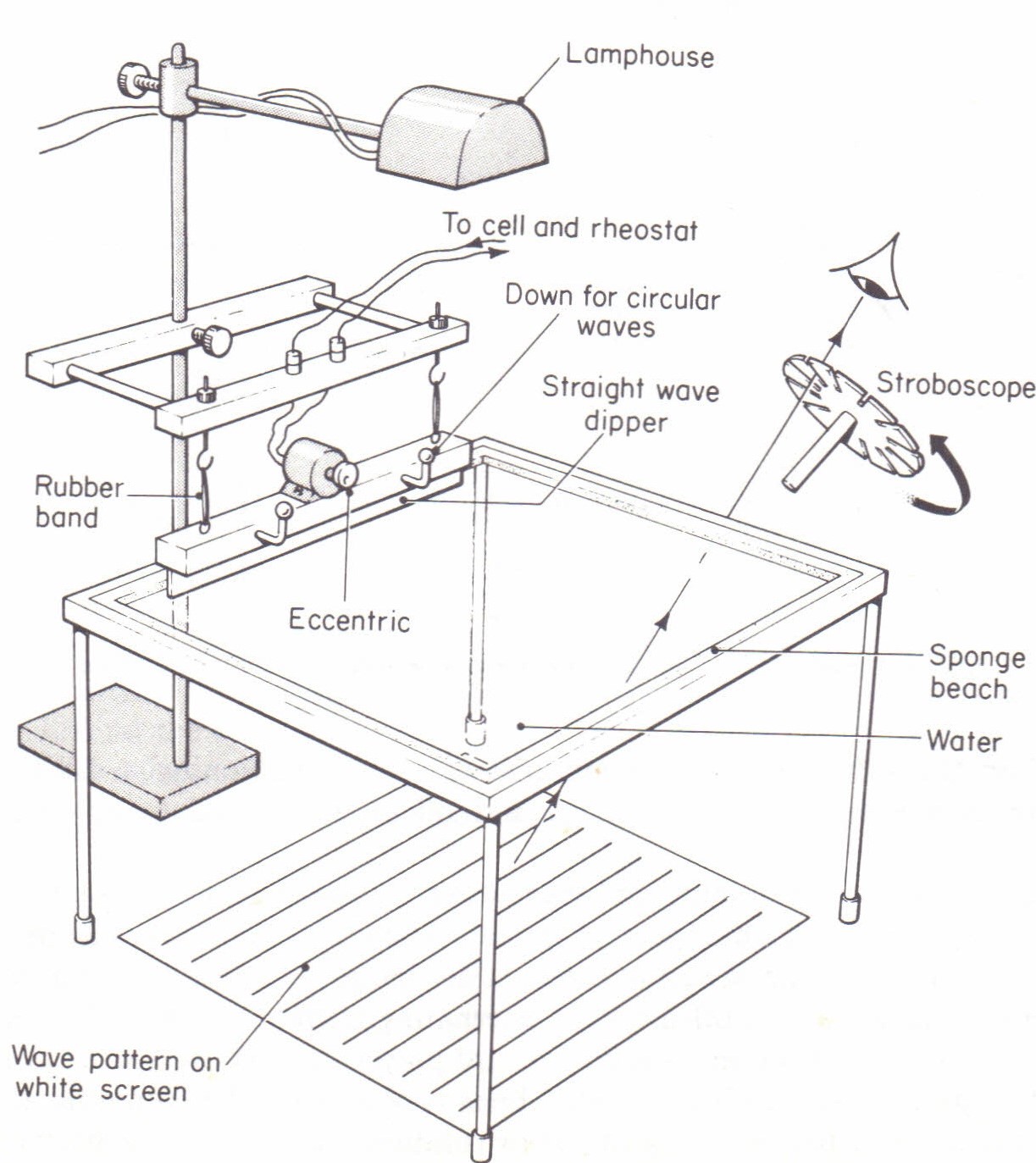PHYSICS | NECTA 2015 | Question 10
(a)(i) List four main parts of a ripple tank.
(ii) What role does a stroboscope play in a ripple tank experiment?
(b)(i) Explain why there are four strings of different thickness in a violin?
(ii) What does a violinist do to change the note emitted by a particular string?
(c)(i) Briefly explain how a resonance tube works
(ii) Calculate the frequency of vibration in a resonance tube of shortest length of 0.22m when the next resonance length is 0.47m.
-
SECTION 01
(a)(i) List four main parts of a ripple tank
Hint diagram:

Full diagram of the ripple tank
Main parts:Oscillating paddle, Shallow tank of water, Illumination and Power Supply(ii) What role does a stroboscope play in a ripple tank experiment?
Stroboscope makes it easier to see patterns of wave behavior with continuous ripples in a ripple tank, especially with ripples at higher frequencies. When a stroboscope rotates at the frequency of the wave generated waves patterns appear and offer the chance for generated waves pattern been observed and analyzed.
-
SECTION 02
(b)(i) Explain why there are four strings of different thickness in a violin?
Hint diagram:

Main parts of violin
Answer:
Variation on string thickness enables each string of violin to be tuned to a different pitch, the lower pitched strings are thicker and the higher pitched are thinner.(ii) What does a violinist do to change the note emitted by a particular string?
Answer:
A violinist can change note emitted by pressing down the string with the fingertips of the left hand on the fingerboard. This shortens the vibrating portion of the string and raises the pitch emitted by a violin. -
SECTION 03
(c)(i) Briefly explain how a resonance tube works

2nd, 3rd and 4th harimonics of the resonance tube
Answer:
By raising or lowering the hollow tube, the height of the air column in the tube changes and so the sound of the air column. When height of the column is a multiple of λ/4 the sound from the fork and the reflected sound form a large sound known as resonance.(ii) Calculate the frequency of vibration in a resonance tube of shortest length of 0.22m when the next resonance length is 0.47m
L1 – Lo = 0.47m – 0.22m = 0.75λ – 0.25λ = 0.5λ
0.5λ = 0.27m
λ = 0.54m
v = f λ
f = v/ λ = (330m/s) / (0.54m) = 611.1Hz

More questions
Physics questions are much EASIER when you clear understand the concept. With Smart Darasa exprole concepts in fun and interactive way.
Learn more »Send Your Physics Question
Are you a STUDENT | PARENT | TEACHER, Send your physics question for FREE and we will get back to you with the solution or relavant link with similar question. We receive questions every day from 08:00hrs to 16:00 EAT. Depend on volume of questions, we send solutions the same day from 18:00hrs to 20:00hrs EAT or later next day.